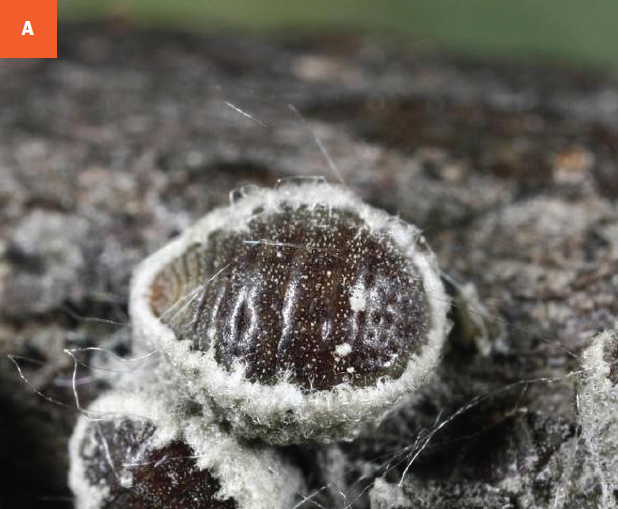European Elm Scale
Gossyparia spuria
HOST Elm
DAMAGE/SYMPTOMS The scale extracts fluids from the phloem of the tree, causing premature yellowing of leaves, especially on the lower branches. Heavy infestations can cause twig drop. The scale excretes excessive amounts of honeydew as a waste product, and black sooty mold can develop on this honeydew.
LIFE CYCLE The scale overwinters as a nymph at the base of buds in cracks of bark or twigs. At the end of June through early July, the female lays eggs that hatch into bright yellow active crawlers within several days. The crawlers will reside within grooves along the midrib and prominent veins on leaf undersides. The scale remains immobile at these sites for the remainder of the summer. There is one generation per year.
MANAGEMENT The scale can be controlled prior to bud break with dormant oils. It can also be controlled during the crawler stage with a contact insecticide. Resistance to systemic insecticides with the active ingredient imidacloprid has occurred with this scale insect.
A European elm scale adult. B European elm scale on bark.


